TON Kombat is an intriguing addition to the TON blockchain ecosystem, integrated into Telegram’s mini apps. It combines traditional gaming elements with Web3 mechanics, garnering a significant following with over 15 million total users and more than 7 million monthly active users within just over three months of its launch.

The competitive landscape of Telegram’s mini-apps is heating up, especially with upcoming updates promising full-fledged app capabilities. This environment makes it particularly fascinating to explore what sets projects like TON Kombat apart, and how their innovative mechanics can be adopted and adapted in broader game design contexts.
Upon diving into TON Kombat for a few weeks, it becomes clear that their scarcity design is exceptionally well-executed.
It’s not just the game mechanics but also their approach to user acquisition through an unconventional method—referring friends, moving away from the traditional pay-to-win model.
Introduction to TON Kombat
According to their own definition, TON Kombat is “the first fierce arena game on Telegram.” If you’re unfamiliar with this genre (as I was before playing), it essentially involves managing a knight avatar, upgrading it to enhance competitiveness, and climbing the ranks through battles.
What distinguishes TON Kombat from its peers in the “fierce arena” category is its clever integration of GameFi elements, offering speculative extrinsic rewards that add an extra layer of excitement.
Monetary Incentives
There’s a tangible promise of monetary value tied to user achievements.
To qualify for the airdrop and to maximize potential gains, players need to demonstrate commitment through in-game activities.
The criteria for the airdrop are clearly outlined:
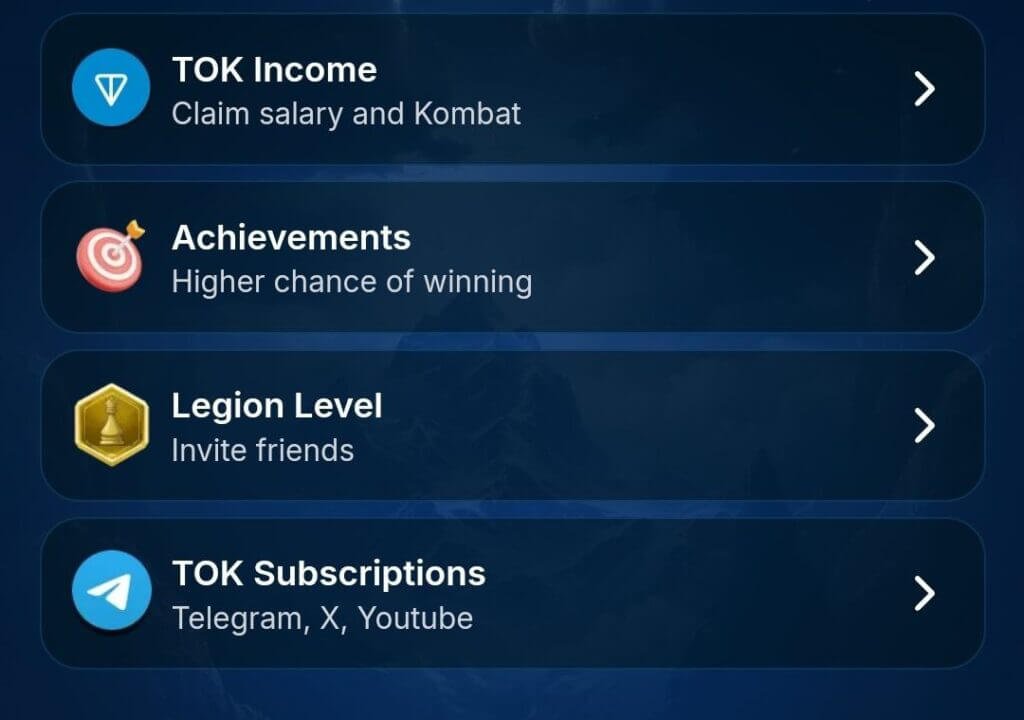
TOK Income: Passive earnings from the game.
Achievements: Special in-game accomplishments.
Legion Level: A progression metric based on competitive play.
TOK Subscriptions: Engagement with the game’s social media presence.
Gameplay Mechanics
TON Kombat does an admirable job with its narrative, albeit limited. It introduces players to eight distinct houses, each with unique attributes affecting gameplay.
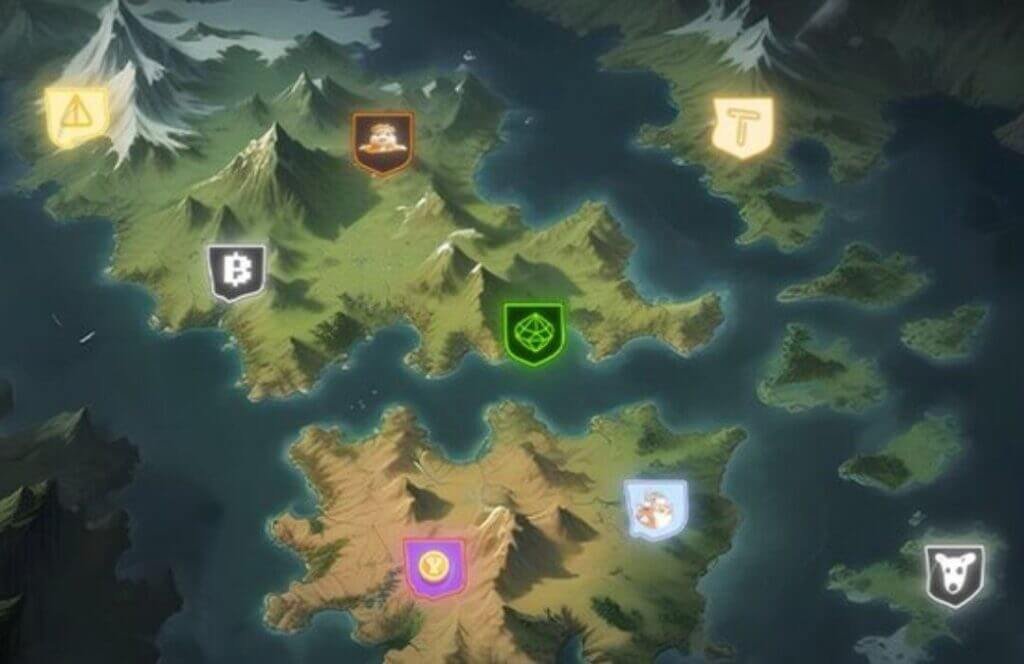
I chose Notcoin, driven by my interest in the related project, which endowed my avatar with high health, moderate luck, but notably lower attack power. Had I opted for the Dogs house, my avatar would have had great luck and attack power but poor health.
To enhance my avatar’s attributes, I navigated to the “upgrades” tab, where three key areas were available for improvement:
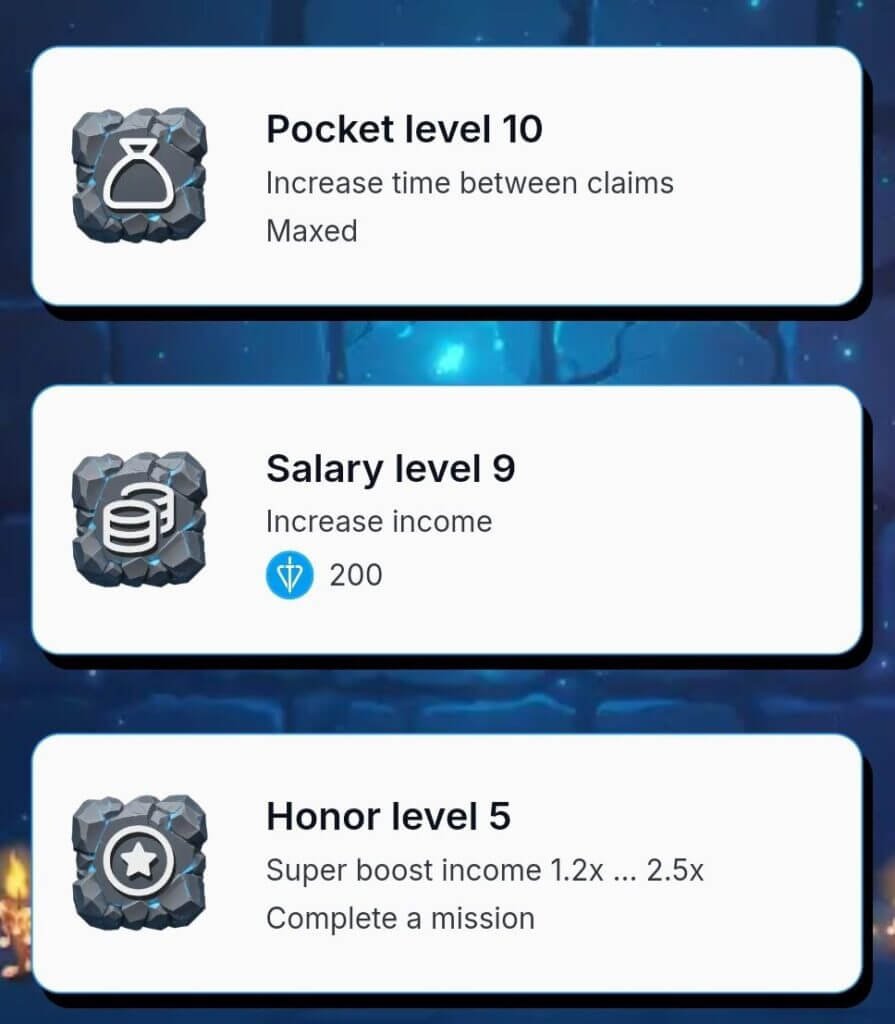
Pocket: Extends the duration for collecting reward points.
Salary: Boosts the rate at which reward points are earned.
Honor: Significantly increases passive income.
Upgrading Pocket and Salary required spending reward points, while Honor demanded completing social missions like referring friends or checking in regularly.
The “Earn” tab presented various tasks for accumulating points, from social media interactions to exploring partner projects.
Although the daily return mechanic was somewhat underwhelming with its inconsistent reward scaling, it still encouraged regular engagement.
Competitive Gameplay
The real competition in TON Kombat comes through ranked matches. Here, the strategic importance of upgrades became evident.
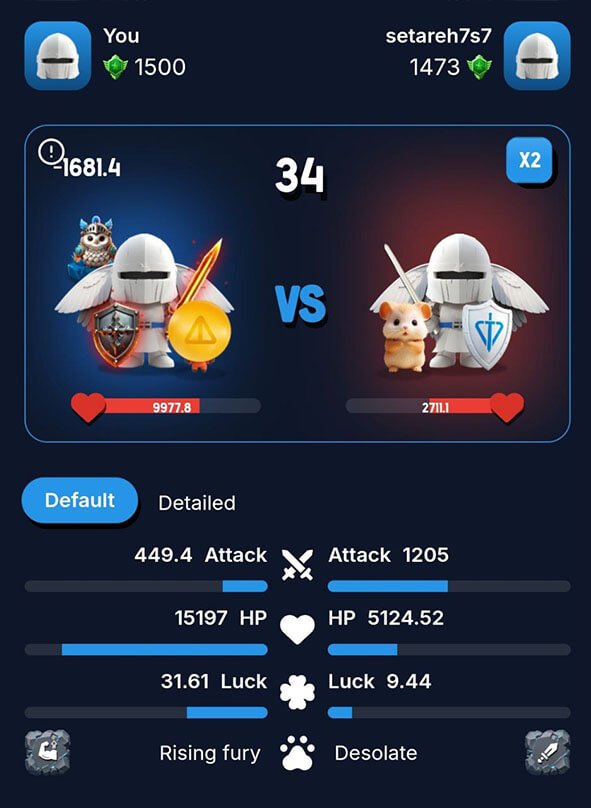
To improve my standing, options were either to patiently grind for points or accelerate my progress by inviting more players to the game, where each referral brought in additional points.
TON Kombat cleverly leverages the psychological principle of ownership, making players invested in not just improving but also multiplying in-game assets. This design not only fosters engagement but brilliantly intertwines social dynamics with gameplay progression.
Ranked Gameplay Mechanics and Item Acquisition
In the realm of TON Kombat’s ranked games, the process is straightforward: a click on ‘play’ initiates an automated duel where the outcome hinges on your avatar’s stats (attack power and HP) and a dash of luck.
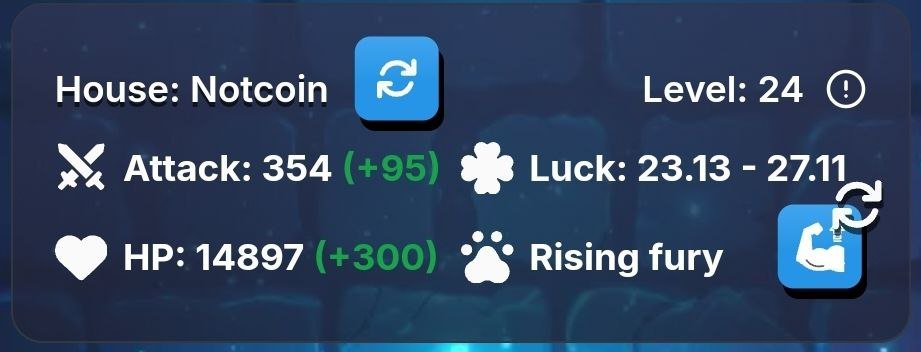
This random element affects the likelihood of landing critical strikes or dodging attacks, adding an unpredictable twist to each match.
The game introduces abilities that players can choose from for free, including:
Reflecting damage back to opponents,
Boosting attack power,
Guaranteeing a critical hit on the third strike,
Siphoning life from enemies.
These abilities, combined with the strategic house selection, encouraged me to experiment with different combinations to optimize my gameplay.
The joy of discovery in this aspect was immense, although my energy, capped at 20 points, was quickly exhausted, forcing a wait of two and a half hours for replenishment.
This scarcity element is cleverly designed to keep players engaged through anticipation.
Exclusive Items and Events
Exploring the items tab revealed that I had only equipped four of the possible six items:
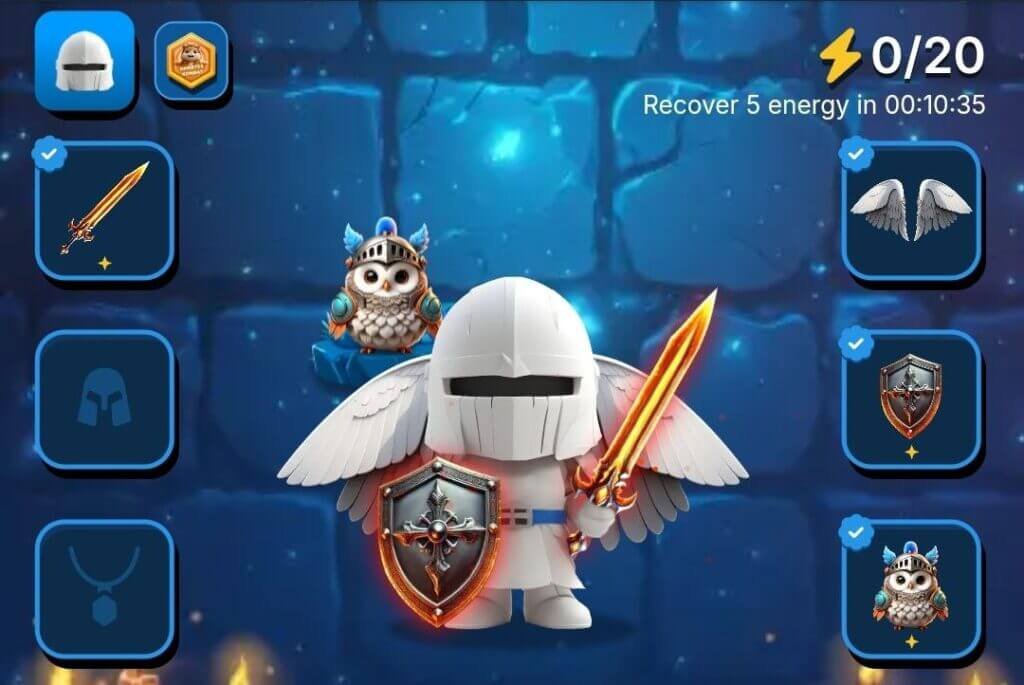
Wings: Acquired through my previous engagement with Hamster Kombat, highlighting the game’s integration with other projects.
Queen’s Gift (Shield): Obtained by referring three friends, showcasing the social aspect of item acquisition.
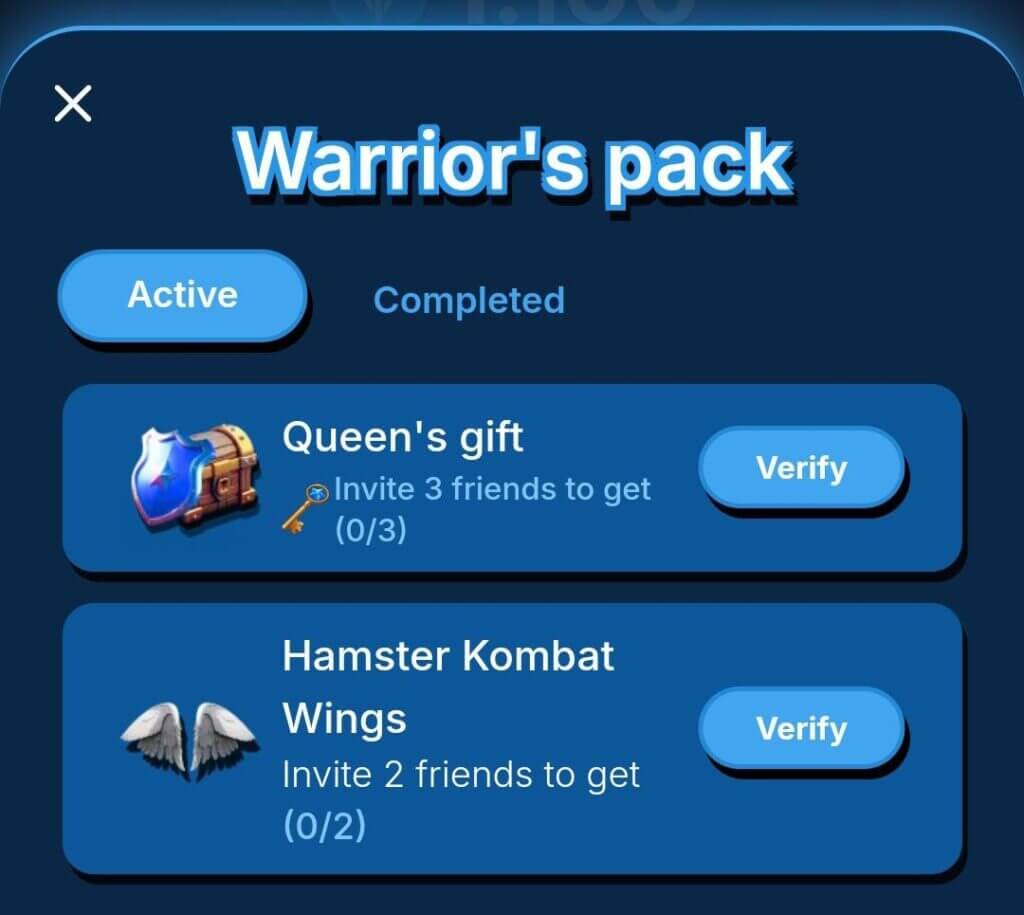
The Founder’s Gift: An achievement suggesting potential for unique rewards, missed by me due to late entry into the game.

Sword: Given by default
The necklace slot, available only during the “King’s Call” event, where players were incentivized to invite friends for substantial rewards, was locked for me, as the event had concluded.
This exclusivity heightens the game’s scarcity appeal, creating a sense of urgency for future events.
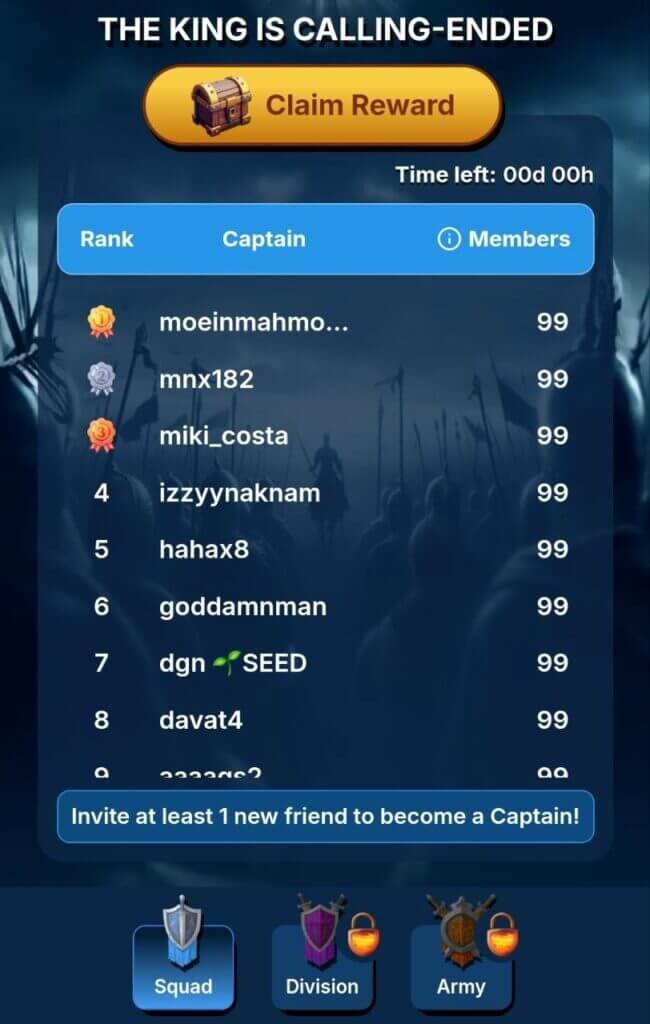
As for the helmet, the sixth item, its acquisition remains unclear, further intensifying the game’s mystique.
Airdrop and Engagement Mechanics
The promise of an airdrop stands as a significant motivator. To enhance one’s chances for a more substantial airdrop:
Maximize TOK Income through diligent gameplay.
Earn Achievements like the Early Adopter status or partnerships with other games.
Increase Legion Level by winning matches, which also provides stars for further progression or mystery box purchases.
Engage with TOK Subscriptions by following and interacting with the game’s social channels.
User Experience Insights
The user experience in TON Kombat is characterized by:
Scarcity Mechanics: Designed to foster engagement through limited access and time-bound events.
User Interface: While functional, it could benefit from better navigation aids, perhaps through in-app guides or a more detailed white paper.
Referral System: Central to the game’s growth, perfectly meshing with its gamified elements by rewarding social activity.
Conclusion
From a gamification standpoint, TON Kombat excels in:
Narrative Integration with the game’s lore and community projects.
Player Choice and feedback loops that personalize the experience.
Sense of Ownership, amplified by both the avatar and the potential for token airdrops.
Scarcity that keeps players engaged through exclusivity and mystery.
The gameplay, while passive, offers a refreshing break from constant active engagement, and the balanced reward point economy ensures a fair challenge in upgrades. The game’s self-sustainability is evident from its effective user acquisition strategies and potential for in-game advertising.
Regarding the project’s backing, information is sparse. However, the game’s performance metrics suggest it’s on track to attract investment interest due to its robust engagement figures.
If you’re intrigued by TON Kombat and aiming to participate in the airdrop, consider joining via a referral link, but be aware, the countdown ends in January.